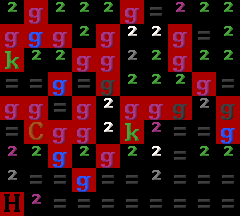- v50 information can now be added to pages in the main namespace. v0.47 information can still be found in the DF2014 namespace. See here for more details on the new versioning policy.
- Use this page to report any issues related to the migration.
Difference between revisions of "Refuse"
m (→Hair) |
|||
| Line 15: | Line 15: | ||
<br clear=left/> | <br clear=left/> | ||
| − | == Uses for | + | == Uses for refuse == |
Despite the name "refuse", some items can be valuable resources for dwarven industries: | Despite the name "refuse", some items can be valuable resources for dwarven industries: | ||
Revision as of 00:21, 9 November 2019
v50.12 · v0.47.05 This article is about the current version of DF.Note that some content may still need to be updated. |
Refuse is anything which can be stored in a refuse stockpile (p-r). Such stockpiles will accept:
- Corpses, bodyparts and bodily remains of creatures (heads, teeth)
- By-products of the meat and fishing industry (bones, raw hide, shells)
- Things which are rotten (rotten meat, rotten meals, rotten raw hide)
- Things the dwarves have no further use for (withered plants, damaged furniture, tattered clothes)
- Vermin remains
Note: Storing clothes or armor in a stockpile with the refuse category enabled will cause them to wear out very quickly.
Uses for refuse
Despite the name "refuse", some items can be valuable resources for dwarven industries:
Bones
A single bone can be used to make a stack of bone bolts [5], a bone crossbow, 1-3 bone crafts, or a bone decoration. Multiple bones can be used to make bone armor (no breastplates, mailshirts or boots). A stack of bones may be required for some strange mood creations.
Raw hides
A raw hide from any size of creature can be tanned at a tannery to produce a single unit of leather. Leather can be used to make leather clothes, leather armor, leather crafts, quivers, backpacks, waterskins, shields, and decorations. Leather may be required for some strange mood creations.
Wool
Butchering or shearing sheep, llamas or alpacas produces a stack of wool. Each unit of wool can be spun into yarn thread at a farmer's workshop. Yarn thread can then be woven into cloth and used to produce clothes, crafts, and decorations. Woolen cloth may be required for some strange mood creations.
Hair
The hair of butchered creatures (e.g. horses or cattle) can be spun into thread, too, although such thread can only be used in healthcare, bookbinding, and trade.
Teeth, ivory, and horn
These items can be processed by a bone carver to produce crafts and decorations.
Shells
Shells can be used to produce a few types of armor, crafts, and decorations. Shells may also be required for some strange mood creations.
Skulls
The skulls of kittens, poultry and other creatures don't need to lie uselessly in your refuse stockpile. Your bone carver can use them to make totems, a trade good.
Sapient corpses
Sapient corpses placed near a high-traffic route will horrify your dwarves from time to time, forcing them to slowly gain discipline points (and spam job cancellations). However, avoid locations that will horrify merchants, causing them to scuttle their wagons, drop their merchandise, and fleeBug:7185.
Refuse Stockpiles
A refuse stockpile works just like any other stockpile and is different from a garbage dump zone (which accepts items explicitly marked to be dumped). The standard predefined refuse stockpile (designated by p-r) includes all types of refuse. Customized stockpiles can allow you to sort out the usable "refuse", the rotting refuse, the unusable but not rotting refuse, or even the reanimatable refuse. Disabling certain types of refuse in all refuse stockpiles will cause those items to accumulate wherever they are produced (eg. bones in the butcher shop) instead of tying up stockpile space.
Avoiding Miasma
Some types of refuse rot, and rotting refuse produces miasma when in a subterranean tile. To avoid the miasma, you can destroy refuse before it rots, or store rotting refuse in a Light and Above Ground tile (see tile attributes). A refuse pile on the surface works, as does exposing any part of your fortress' Inside Dark Subterranean tiles to sunlight and then covering them with constructed floors or walls. Such tiles will remain Light Above Ground and thus the refuse stored there will not generate any miasma.
Refuse collection options
Refuse items lying outside your fortress will be ignored by default. You can toggle collection of "outside" refuse in the standing orders menu (o-r-o). Note that this setting also controls the collection of "dumped" items outside your fortress.
